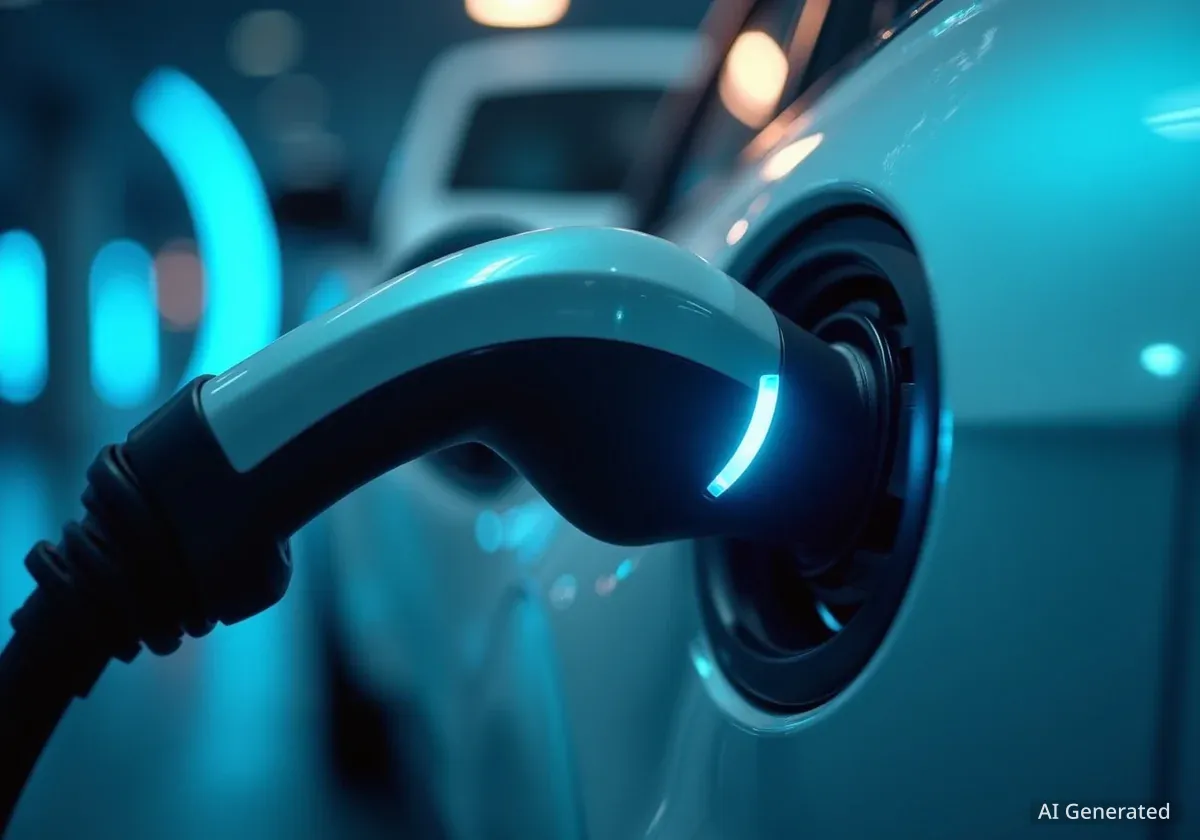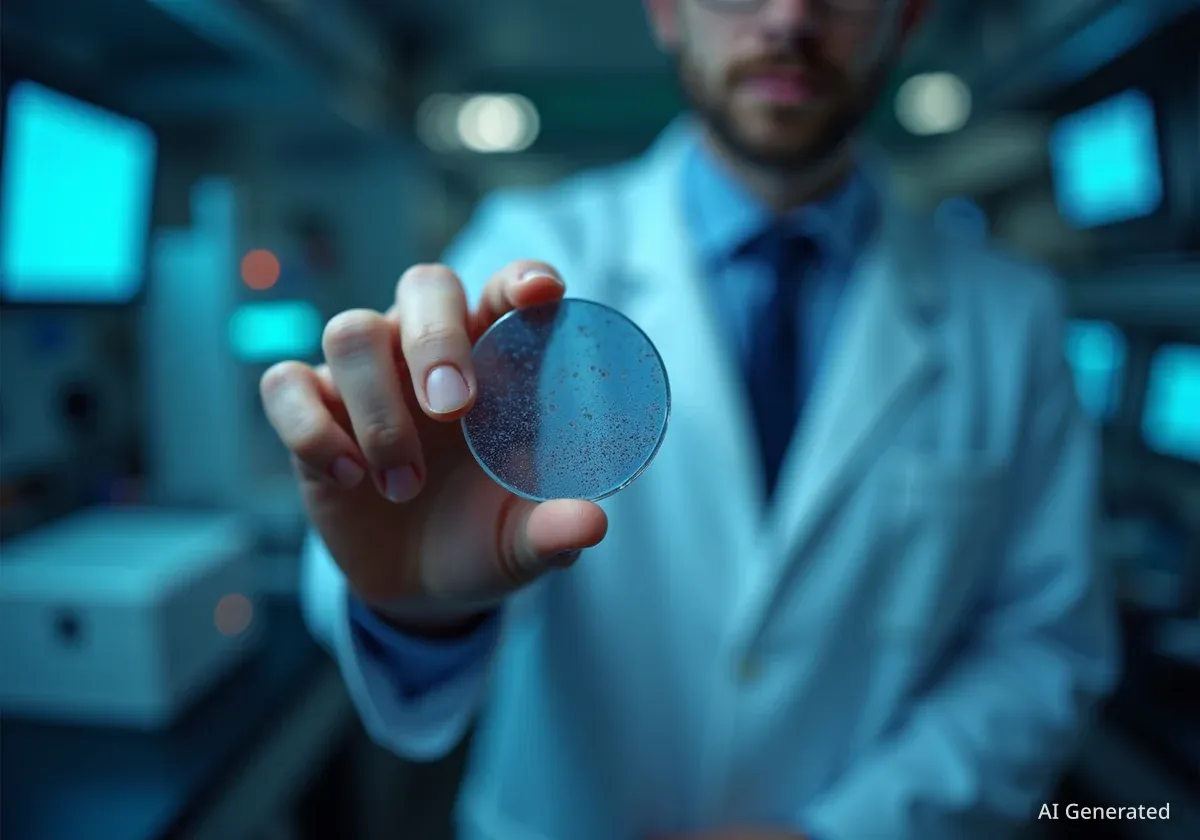Researchers at Northwood University have developed a new solid-state battery technology that can charge to 80% capacity in under five minutes. The breakthrough design also retains over 95% of its capacity after 2,000 charge cycles, significantly outperforming current lithium-ion batteries.
The innovation, detailed in the latest issue of the journal Advanced Energy Materials, uses a novel polymer-ceramic composite as its electrolyte. This material improves safety by eliminating the flammable liquid found in conventional batteries and could accelerate the adoption of electric vehicles and improve consumer electronics.
Key Takeaways
- A new solid-state battery developed at Northwood University charges to 80% in less than five minutes.
- The battery maintains over 95% of its initial capacity after 2,000 full charge and discharge cycles.
- It uses a safe, non-flammable polymer-ceramic electrolyte, replacing the volatile liquids in current lithium-ion batteries.
- The technology has major implications for electric vehicles (EVs), smartphones, and grid-level energy storage.
A Major Advance in Energy Storage
A team led by Dr. Alena Petrova at Northwood University's Institute for Materials Science has announced a significant step forward in battery technology. Their work addresses three of the biggest challenges facing current energy storage solutions: charging speed, longevity, and safety.
Today's lithium-ion batteries, which power everything from smartphones to electric cars, typically take anywhere from 30 minutes to several hours to charge fully. They also degrade over time, with most consumer-grade batteries losing a noticeable amount of capacity after just 500 cycles.
"Our goal was to create a battery that felt as convenient as filling a tank of gas while being fundamentally safer and more durable," Dr. Petrova explained in a statement. "We believe this new architecture achieves that balance."
The research demonstrates a laboratory-scale prototype that achieves performance metrics far beyond existing commercial technology. This development could reshape industries reliant on portable power.
How the New Battery Technology Works
The core innovation lies in the battery's electrolyte, the medium that allows lithium ions to travel between the anode and cathode during charging and discharging.
Instead of the liquid electrolyte used in standard lithium-ion batteries, which is often flammable and can cause fires if the battery is damaged, Dr. Petrova's team created a solid, flexible composite material.
What Is a Solid-State Battery?
A solid-state battery replaces the liquid or polymer gel electrolyte found in conventional lithium-ion batteries with a solid material. This design offers potential benefits like higher energy density (more power in a smaller space), faster charging, a longer lifespan, and improved safety because solid electrolytes are non-flammable.
The Polymer-Ceramic Electrolyte
The new electrolyte combines the flexibility of a polymer with the high ionic conductivity of a ceramic material. This unique structure creates microscopic channels that allow lithium ions to move at exceptionally high speeds, which is the key to its rapid charging capability.
"Think of it as building a dedicated, multi-lane superhighway for ions," said Dr. Petrova. "Previous solid-state designs were more like a network of small, winding roads. Our material provides a direct, efficient path."
Key Performance Metrics
- Charging Speed: 0% to 80% in under 5 minutes.
- Longevity: Retains 95.7% capacity after 2,000 cycles.
- Energy Density: 410 Wh/kg (Watt-hours per kilogram).
- Operating Temperature: Stable from -20°C to 80°C (-4°F to 176°F).
This high conductivity was previously a major hurdle for solid-state designs, which often required high temperatures to operate effectively. The Northwood University battery, however, performs reliably even at room temperature and below freezing.
Potential Impact on Major Industries
If this technology can be scaled for mass production, its effects would be transformative across multiple sectors. The most immediate and significant impact would be on the electric vehicle (EV) industry.
Revolutionizing Electric Vehicles
One of the main barriers to widespread EV adoption is "range anxiety" and long charging times. A battery that can add over 200 miles of range in about five minutes would make the EV charging experience comparable to stopping at a gas station.
Furthermore, the battery's longevity is a crucial factor. An EV battery that lasts for 2,000 cycles with minimal degradation could power a vehicle for well over 500,000 miles, potentially lasting the entire lifetime of the car. This would significantly reduce the total cost of ownership and increase resale value.
Enhancing Consumer Electronics
For smartphones, laptops, and other portable devices, this technology promises a future where devices charge in minutes and their batteries do not need replacement for many years. The enhanced safety also reduces the risk of fires or explosions associated with damaged lithium-ion cells.
The higher energy density means that manufacturers could either create devices with much longer battery life or design them to be even thinner and lighter without sacrificing power.
Challenges and the Road to Commercialization
While the laboratory results are highly promising, the path to bringing this technology to market involves several significant challenges. Scaling up the manufacturing process for the new polymer-ceramic electrolyte is the primary hurdle.
"Creating a small, perfect sample in a lab is one thing. Producing millions of meters of this material consistently and affordably is another challenge entirely," Dr. Petrova acknowledged. "We are now focusing on refining the synthesis process to make it suitable for industrial-scale production."
The university has already filed several patents for the technology and is in discussions with multiple battery manufacturers and automotive companies to form partnerships. Industry experts estimate that, if these manufacturing challenges are overcome, the first commercial products using this technology could appear within five to seven years.
The development at Northwood University represents a critical milestone in the global race to build better batteries. By addressing speed, safety, and lifespan simultaneously, this new solid-state design provides a clear and compelling vision for the future of energy storage.





